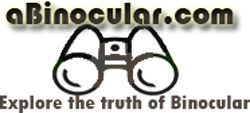Binoculars are powerful optical tools that can open up a world of detail and beauty in the great outdoors. Whether you’re an avid birdwatcher, a sports enthusiast, or simply someone who enjoys observing the wonders of nature, knowing how to use binoculars effectively is essential. In this comprehensive guide, we will delve into the basics of binoculars, how to choose the right pair, and offer practical tips on how to use them to enhance your viewing experience.
Chapter 1: Understanding Binoculars
1.1 Binocular Anatomy
Before you start using binoculars, it’s important to understand their basic components:
- Objective Lenses: These are the front lenses that gather light and determine the binoculars’ magnification and light-gathering capability.
- Prism System: Binoculars can have either Porro prisms or roof prisms. The prism system is responsible for inverting the image and directing it to your eyes.
- Eyepieces: These are the lenses you look through, and they further magnify the image created by the objective lenses.
- Focusing Knob: The focusing knob adjusts the focus of the binoculars to make the image sharp.
- Diopter Adjustment: Some binoculars have a diopter adjustment on one of the eyepieces to accommodate differences in individual eyesight.
- Exit Pupil: This is the diameter of the shaft of light leaving the eyepiece. It determines the brightness of the image.
1.2 Types of Binoculars
There are various types of binoculars designed for specific activities:
- Birdwatching Binoculars: These often have a wider field of view and excellent close-focus capabilities.
- Astronomy Binoculars: These are designed for stargazing, with larger objective lenses for better light-gathering.
- Marine Binoculars: Built to withstand harsh conditions, they are often waterproof and fogproof.
- Hunting Binoculars: These are rugged and built for durability in the field.
Chapter 2: Choosing the Right Binoculars
2.1 Magnification and Objective Lens Size
Binoculars are often described with two numbers, such as 8×42. The first number represents magnification, and the second is the diameter of the objective lenses in millimeters. A higher magnification provides a closer view, but it also reduces the field of view and can make the image shakier without a tripod.
2.2 Field of View
A wide field of view is crucial for activities like birdwatching and sports. It allows you to observe more area at once. However, high magnification typically results in a narrower field of view.

2.3 Lens Coating and Glass Quality
Look for binoculars with fully multi-coated lenses, as this reduces glare and improves light transmission. High-quality glass is essential for sharp, clear images.

2.4 Size and Weight
Consider the size and weight of the binoculars, especially if you plan to carry them for extended periods. Compact binoculars are more portable, while larger ones often provide better image quality.
2.5 Budget
Binoculars come in a wide price range. While it’s tempting to go for the cheapest option, investing in a quality pair will provide better long-term satisfaction.
Chapter 3: How to Use Binoculars
3.1 Adjusting Diopter and Focusing
- Start by adjusting the diopter setting if your binoculars have one. Close your right eye and focus on a distant object with your left eye. Turn the diopter adjustment until the image appears sharp.
- Keep both eyes open when focusing. Look through the binoculars with both eyes and use the central focusing knob to make the image sharp.
3.2 Holding Binoculars Steadily
To minimize shakiness:
- Use a tripod or monopod for high-magnification binoculars.
- Brace your elbows against your body or a solid surface when handheld.
- Use a neck strap or harness for added stability.
3.3 Scanning and Following Moving Objects
When tracking fast-moving objects, like birds in flight or athletes on a field:
- Move your whole upper body to follow the motion smoothly.
- Practice panning to keep the subject in your field of view.
3.4 Using Binoculars with Glasses
If you wear glasses, fold down the rubber eyecups or twist-up eyecups if your binoculars have them to maintain the proper eye relief.
Chapter 4: Maintenance and Care
To ensure your binoculars provide years of clear viewing pleasure, follow these maintenance tips:
- Store them in a protective case when not in use.
- Keep the lenses clean using a lens brush and lens cleaning solution.
- Protect them from extreme temperatures and humidity.
- Check the eyecups and other moving parts for wear and tear.
- Have them professionally serviced if necessary.
You can check this instruction in case you need.
Summary
Learning how to use binoculars properly can significantly enhance your outdoor adventures and observational experiences. By understanding the basics of binocular anatomy, selecting the right pair, and following the tips for usage and maintenance outlined in this guide, you’ll be well-prepared to explore the world with a clearer, more detailed perspective through your binoculars. Whether you’re watching wildlife, enjoying a sports event, or gazing at the stars, binoculars will undoubtedly enhance your appreciation of the world around you.
